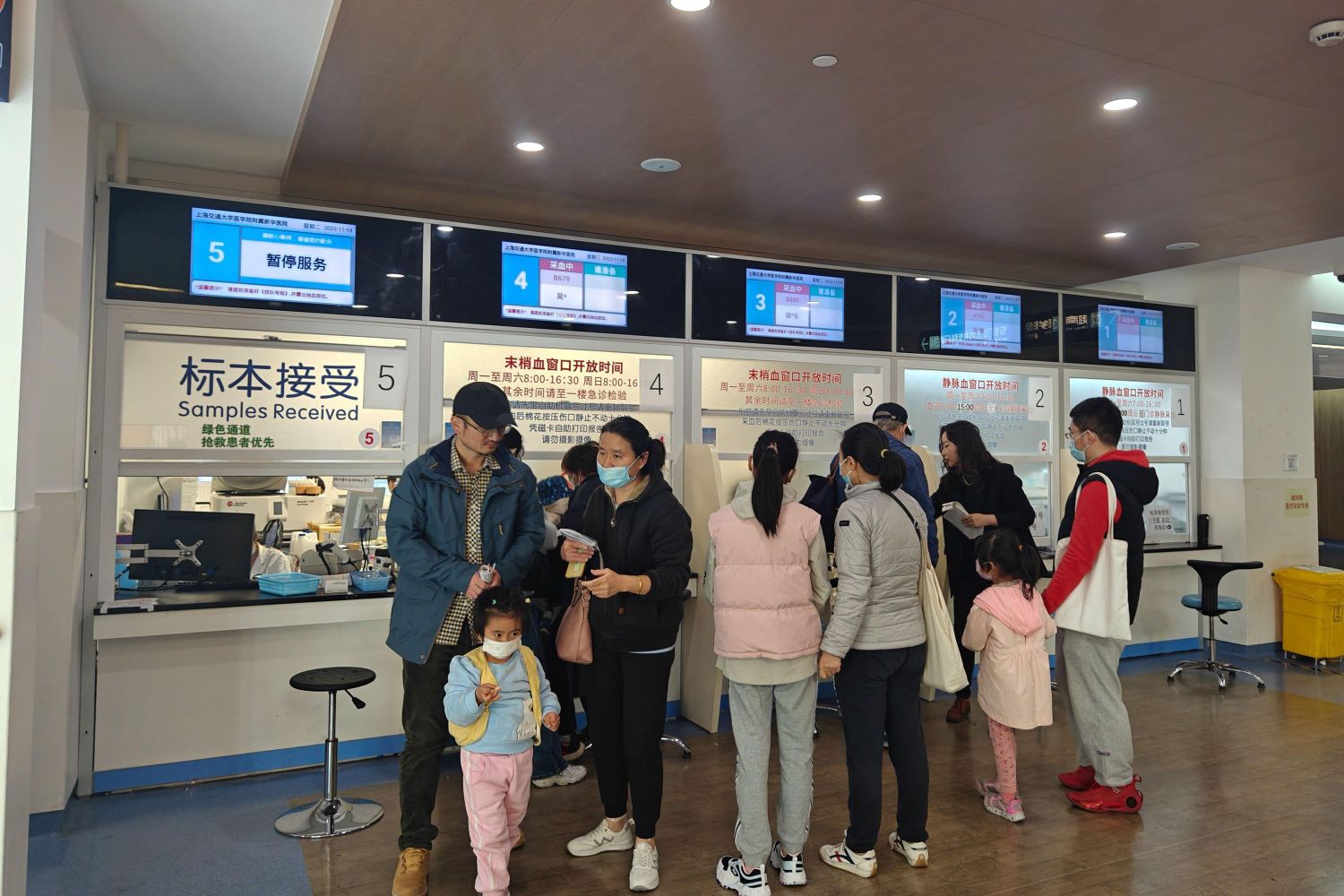Hospitals in Beijing and northern China are currently facing a surge in children with respiratory illnesses as the country experiences its first winter since easing strict Covid-19 controls nearly a year ago.
According to Chinese state and social media, wait times to see doctors are stretching for hours, with hundreds of patients lining up at some children’s hospitals in major cities across northern China.
An official from Beijing Children’s Hospital revealed to state media on Tuesday that the hospital is seeing more than 7,000 patients daily on average, exceeding its capacity.
Similarly, the largest pediatric hospital in Tianjin set a record by receiving over 13,000 children in its outpatient and emergency departments last Saturday, as reported by a local state-run outlet.
When inquired about appointment availability at Beijing Friendship Hospital on Thursday, a staff member mentioned that seeing a pediatrician could take the entire day due to the high volume of patients.
Health officials in Beijing and other major cities in northern China have attributed the surge to typical seasonal illnesses such as influenza, respiratory syncytial virus (RSV), and mycoplasma pneumonia—a bacterial infection common in children.
This increase in cases coincides with a rise in seasonal respiratory infections across the northern hemisphere, including the United States, where RSV is spreading extensively among children.
However, global concern escalated after the World Health Organization (WHO) requested more information from China following reports of a rise in respiratory illnesses and clusters of undiagnosed pneumonia in children, as indicated by the ProMED surveillance system.
After discussions with Chinese health authorities and hospitals, the WHO clarified on Thursday that the surge in outpatient consultations and hospital admissions among children was primarily due to mycoplasma pneumonia since May and the seasonal illnesses RSV, adenovirus, and influenza virus since October.
The WHO emphasized that while some increases occurred earlier than usual in the season, these were anticipated following the relaxation of Covid-19 restrictions, similar to trends observed in other countries.

The agency further noted that Chinese authorities confirmed no detection of new or unusual pathogens or unusual clinical presentations associated with the surge.
External experts, while noting the absence of evidence for a novel pathogen, urged China to enhance transparency by sharing more information with the public.
“We don’t think there is an unknown pathogen hidden somewhere,” commented Jin Dongyan, a virologist at the University of Hong Kong. “There’s no evidence for that.”
Catherine Bennett, an epidemiologist at Deakin University in Australia, underscored the importance of monitoring infection sources to rule out any concerns about new pathogens or increased disease severity.
The current surge in hospital visits coincides with China’s first winter without stringent “zero-Covid” controls, which included strict social distancing and mask mandates.
These measures were relaxed last December following public protests against the stringent pandemic measures, but it remains unclear if there has been a significant increase in respiratory illnesses or severe cases among children compared to pre-pandemic years due to limited publicly available data.
Jin added, “During zero-Covid, these (common respiratory) diseases would be under-estimated (as people avoided hospitals), and because everyone was practicing some social distancing the incidence was low.”
The ongoing situation underscores the need for prompt reporting and monitoring of disease outbreaks, particularly in the context of the Covid-19 pandemic and the potential emergence of new viruses or mutations causing respiratory illnesses.
Christine Jenkins, a respiratory medicine professor at UNSW Sydney, emphasized that a rise in viral respiratory infections among children during the onset of winter is a well-documented global phenomenon over many decades.
She stressed, “Prompt reporting and monitoring are essential, particularly in the context of a pandemic involving a relatively new virus such as the novel coronavirus and the potential for other new viruses or mutations to cause respiratory tract illness.”
